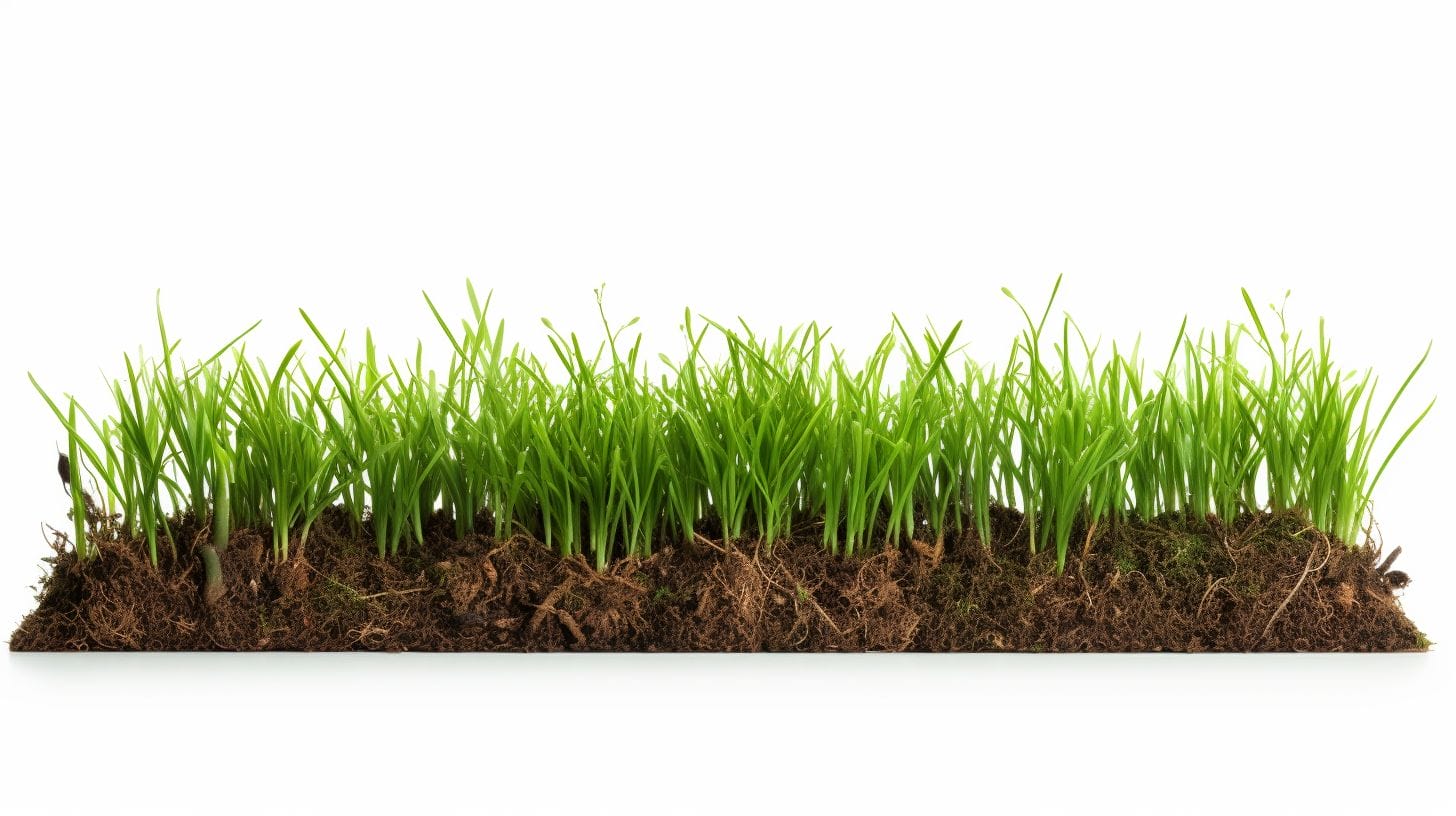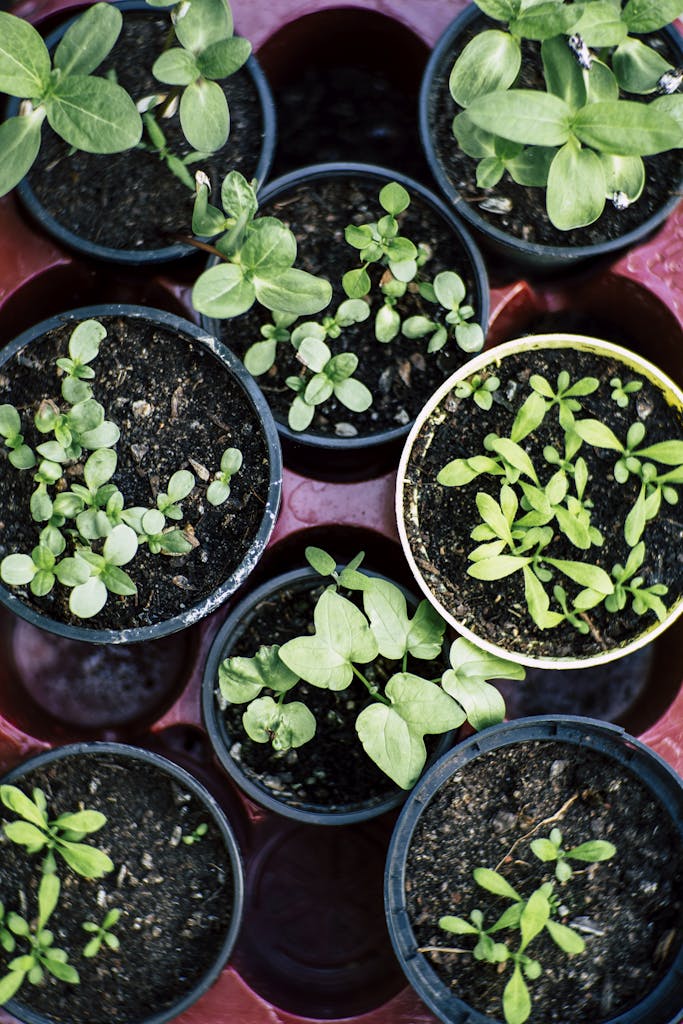Does Liquid Aeration Work on Clay Soil: The Lawn Enthusiast’s Guide
Greetings, grass lover! Welcome to your definitive handbook for utilizing liquid aeration. Are you considering if liquid aeration is effective for clay soil? Time to bid farewell to the days of battling with dense, hard soil that suffocates your cherished lawn.
This blog post will guide you through the ins and outs of this revolutionary treatment method. We’ll delve deep into the nuts and bolts of how it works, compare it with traditional core aeration techniques, and determine whether it’s the holy grail for all your clay soil woes.
Ready to take a step towards greener pastures in your gardening journey? Pull on those garden gloves – let’s get our hands dirty!
Key Takeaways
- Liquid aeration is an effective method for improving clay soil conditions in your lawn.
- It utilizes water and specialized ingredients to create small holes in the soil, facilitating the access of air, water, and nutrients to the plant roots.
- Liquid aeration can reach deeper into the soil than its traditional core aeration counterpart.
- It reduces soil compaction, supports robust grass growth, and enhances the overall resilience of your lawn.

Understanding Liquid Aeration
Liquid aeration employs a specialized blend of water and additives like liquid humates or surfactants to refine the soil structure for the advantage of your lawn’s plant life. These compounds facilitate the formation of minute openings in the soil, creating pathways for the plant roots’ aeration, hydration, and feeding.
Its noteworthy attribute is its ability to go significantly deeper than standard core aeration without requiring hefty machinery. A simple garden pump sprayer or hose-end sprayer suffices! Post application, it takes a short while to unleash its magic. But fret not! While you anticipate the resulting transformation, it encourages beneficial insects to flourish within your turf.
Liquid Aeration YouTube Tutorial
Liquid Aeration vs. Traditional Core Aeration
When aerating your lawn, you’re probably well acquainted with traditional core aeration. But have you ever entertained the concept of liquid aeration? While both modalities aim to alleviate soil compaction and promote healthy grass development, they represent some key differences.
Let’s observe how liquid aeration stacks against traditional core aeration.
Liquid vs Core Aeration YouTube Tutorial
Differences and Similarities
Having been introduced to liquid and core aeration, you need to comprehend their divergences and overlaps. Both methods effectively combat soil compaction but function via different mechanics and outcomes. Allow us to present you with a tabulated comparison to facilitate your understanding:
| Liquid Aeration | Core Aeration | |
|---|---|---|
| Application Method | Applied through a garden pump sprayer or hose-end sprayer | Requires drilling holes in the soil |
| Primary Ingredients | Comprises of liquid humates and surfactants | No additional products used |
| Soil Penetration Depth | Can reach deeper depths in the soil | Limited soil penetration depth |
| Long-Term Effects | Long-lasting effect on reducing soil compaction | Shorter-term effect |
| Support for Beneficial Microbes | Promotes the growth of microbes naturally decomposing compacted soil | Also stimulates the growth of beneficial microbes |
While both techniques can fortify your lawn, your choice between liquid aeration and core aeration should be dictated by your unique needs, soil condition, and accessible resources.
Does Liquid Aeration Work on Clay Soil?
Liquid aeration proves itself capable against clay soil. It treats the compacted soil, enabling air and water to reach the roots of your lawn’s vegetation. This form of aeration can access deeper soil layers compared to conventional core aeration methods. The outcome? Long-term amelioration of your clay soil.
Certain products, such as Revive Liquid Lawn Aerator, can further amplify this effect. Designed specifically for tough ground, it infiltrates the ground to soften it, making it an ideal environment for plant growth.
Bear in mind, though, that this is a game of patience. Don’t expect an immediate transformation. You’ll witness your lawn’s metamorphosis into a lush, fertile paradise for several weeks or even months. Pairing it with high-quality fertilizer ensures an even healthier lawn.
Liquid Aeration Effectiveness YouTube Tutorial
How Does Liquid Aeration Work?
Liquid aeration incorporates a unique formulation that, upon application to the soil, aids in improving soil structure and reducing soil compaction. How so? The aeration solution contains an ensemble of ingredients such as surfactants, humic acid, seaweed extract, and beneficial microbes that cooperate in refining the soil’s health status.
Once you spray this product onto your turf, it seeps into the soil and aids in breaking apart compacted clay particles. This process fosters the formation of minuscule channels or pores within the soil structure. These pores facilitate better airflow, water infiltration, and nutrient absorption by the grassroots, leading to healthier soil structure and improved vegetation development over time.
Time-frame for Results
Patience is the name of the game with liquid aeration. It’s not an immediate fix like some other gardening solutions. But that’s just fine! All good things take time, after all.
You should begin to spot some changes approximately two to three weeks post-application. To encourage optimal lawn health and vibrant grass growth, continual usage every month is advised.
Gradually adopting this approach transforms your clay into a softer, more plant-friendly habitat, enabling the roots to expand comfortably and better absorb nutrients.
Benefits of Liquid Aeration
Aside from transforming clay, liquid aeration brings several key advantages for any gardening enthusiast. On the one hand, it works on reducing soil compaction, allowing for enhanced grass health and growth.
On the other, it forms pores within the ground structure, contributing to the grassroots’s efficient intake of water and nutrients. This improves root stability and the overall resilience of your lawn towards drought conditions.
Furthermore, incorporating beneficial microbes within these products can enhance soil biodiversity and enzymatic activity, greatly improving fertilization outcomes. Indeed, it could be your golden ticket to overcome the hurdles clay soil throws at your mission of maintaining a cheerful and radiant turf.
Reduction of Soil Compaction
Tackling soil compaction is a unique challenge for any gardener. Compacted ground hinders the effective infiltration of air, water, and nutrients into the plant roots. The solution? Liquid aeration!
It mitigates the hard-headedness of the compacted ground and increases its porosity. This facilitates improved water infiltration, root penetration, and overall plant health. The modification of the ground structure supports the thriving of beneficial organisms, contributing to the long-term health of your garden.
So, if you’re wrestling with compacted clay, liquid aeration could be your answer!
Improved Lawn Health
The health improvement of your lawn is a top priority for any gardening enthusiast. Liquid aeration can significantly contribute to achieving this aim. Loosening compacted soil and boosting oxygen levels encourages better nutrient absorption, strong root development, and a healthier and more vibrant lawn.
Unlike traditional core aeration, which merely affects the ground surface, liquid aeration penetrates deeper, providing long-lasting results. Therefore, if you relish flourishing grass and long to own a beautiful, lush lawn, adopt it into your lawn care routine.
Best Liquid Aeration Products for Clay Soil
Some have stood up to the test when selecting the optimal liquid aeration products. Two highly recommended products are Simple Lawn Solutions and Lawnstar Liquid Soil Aerator.
These products have been specifically engineered to penetrate densely and enhance their overall condition. Simple Lawn Solution contains essential nutrients and bio-stimulants that promote healthy grass growth while also decompressing compacted ground.
Conversely, Lawnstar Liquid Aerator amalgamates humic acid, seaweed extract, and advantageous microbes to bolster the ground structure and promote nutrient uptake by the grassroots. Both these products have garnered positive feedback from gardeners battling clay complications.
So, if you’re searching for efficient remedies to boost your lawn health amid challenging clay ground conditions, give these products a go!
Simple Lawn Solution
As a gardening enthusiast desiring solutions for clay ground complications, you might be interested in Simple Lawn Solution. This product is specifically tailored to enhance the quality of clay and promote healthy grass growth.
Key ingredients like liquid humates and surfactants activate the ground microorganisms and soften compacted regions. You can accomplish a stunning lawn to bask in by implementing Simple Lawn Solution alongside a fertilizer.
Don’t hesitate to see the transformation it could bring to your garden!
Lawnstar Liquid Soil Aerator
Lawnstar Liquid Soil Aerator is an effective antidote for compacted clay ground, capable of promoting the healthy growth of your lawn. This liquid aeration product combines liquid humates and surfactants to activate beneficial microorganisms and soften the ground.
In contrast with traditional core aeration methods, liquid aeration can seep deeper into the ground, offering longer-lasting results. Choosing a liquid lawn aerator involves considering ingredient quality, tangible benefits, and eco-friendly packaging.
With Lawnstar Liquid Soil Aerator, the enhancement of your clay earth and the prosperity of a healthier lawn can be effortlessly attained.
Can Liquid Aeration Help Improve Clay Soil?
Can liquid aeration with lye for gardening: weed control & soil pH improve clay soil? Liquid aeration breaks up compacted clay soil, allowing for better water and nutrient absorption. Lye, when used appropriately, can help control weeds and adjust the soil’s pH levels. Together, they offer potential improvements for clay soil quality.
How to Apply Liquid Aeration on Clay Soil
Applying liquid aeration on clay soil can be achieved by following these steps:
- Prepare the area: Clear your lawn of any debris, such as leaves or grass clippings, before applying the aeration product.
- Choose the right product: Opt for aeration products known for their efficiency with clay. These products typically consist of ingredients like liquid humates and surfactants that aid in decomposing compacted soil.
- Understand the instructions: Ensure you’ve thoroughly read and understood the instructions laid out on the product label. Different aeration products may have varying application rates – so adhering to the manufacturer’s recommendations is critical.
- Mix the solution: If necessary, blend the aeration product with water, abiding by the instructions. Some products come pre-mixed, while others need dilution.
- Load your sprayer: Pour the mixed solution into a garden pump sprayer or a hose-end sprayer. Opt for a sprayer compatible with liquid applications.
- Spread evenly: Commence at one corner of your lawn and weave your way across in straight lines. Ensure an even spread of the aeration solution over the entire area, particularly targeting the sections of clay.
- Light watering: Pursuant to applying the aeration product, lightly water your lawn to aid the solution in penetrating deeper. Avoid excessive watering, as it may wash away or dilute the solution.
- Allow drying: Allow sufficient time for the solution to dry before walking on or mowing your lawn.
- Repeat, if necessary: Depending on the severity of your grounds compaction, you might need to reiterate this process every few months or as suggested by the product manufacturer.
After unlocking the full potential of your clay soil, learn how to add essential calcium—your next step towards a lush, vibrant lawn!
Conclusion
In conclusion, liquid aeration can be an effective solution for improving clay soil in your lawn. Through the use of specially formulated products, you can enhance oxygen levels and transform your compacted soil into more porous and fertile soil.
It penetrates deeper than traditional core aeration, providing long-lasting benefits. With time and the support of beneficial microbes, you will observe improvements in soil compaction and overall lawn health.
So, venture into the world of liquid aeration and transform your lawn into a lush, vibrant garden!
FAQs
What is lawn aeration?
Lawn aeration is a practice that helps to loosen soil. It involves using an aeration machine to create small openings that assist the infiltration of water, nutrients, and air into the soil.
How can liquid lawn aeration improve clay soil?
Liquid lawn aeration addresses hard clay soil by softening it and breaking it down into smaller ones using liquid soil conditioners, enhancing water absorption and reducing water logging.
Does DIY liquid lawn aeration work on my worn spots from heavy foot traffic?
DIY liquid lawn aeration solutions like baby shampoo and hydrogen peroxide can help soften high-traffic sections of your yard, preparing them for applying plant growth hormones and fertilizers.
Which is better: Liquid Aeration or Core Aeration?
Both have their benefits! While core aerators remove soil plugs, liquid lawn aeration introduces organic matter without the need for disruptive machinery.
Can homemade tonics be used as part of my regular Lawn Maintenance?
Absolutely. Tonics prepared from compost or other products that combat soil contraction blend well with over-the-counter growth-enhancing products.
Is it safe to use these products near areas with high human or pet traffic?
Products labeled “environmentally safe” should not harm insects, pets, or humans. It is always wise to thoroughly read labels to understand what’s inside any bottle you spray around your yard.







